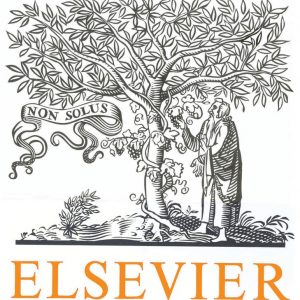دانلود رایگان مقاله لاتین دینامیک روابط عمومی شرکتاز سایت الزویر
عنوان فارسی مقاله:
دینامیک روابط عمومی شرکت: ذینفعان داخلی و خارجی و نقش تمرین کننده
عنوان انگلیسی مقاله:
Corporate public relations dynamics: Internal vs. external stakeholders and the role of the practitioner
سال انتشار : 2016

برای دانلود رایگان مقاله دینامیک روابط عمومی شرکت اینجا کلیک نمایید.
بخشی از مقاله انگلیسی:
2. Literature review
2.1. The call for dialogic public relations Since the late 1990s, public relations scholars have perpetuated the concept of dialogue established by Ron Pearson in 1989 (Botan & Taylor, 2004; Botan, 1997; Kent & Taylor 2014; Kent & Taylor, 1998, 2002; Kent, 2008). Pearson (1989) positioned dialogue as an ethical approach to public relations saying, “It is morally right to establish and maintain communication relationships with all publics affected by organizational action and, by implication, morally wrong not to do so” (p. 329). Building on this idea, Botan (1997) pushed for practitioners to transition from a one-way transactional model of communication to a more ethical, two-way, dialogic communication process. Botan (1997) argued, “Traditional approaches to public relations relegate publics to a secondary role, making them an instrument for meeting organizational policy or marketing needs, whereas dialogue elevates publics to the status of communication equal with the organization” (p. 196). This relational framework marked a major shift in PR theory, encouraging the field to argue for the PR role as an ethical backbone to the organization rather than a mere organizational support system transmitting corporate messages with no consideration of stakeholder needs. Kent and Taylor (1998) developed the first framework for fostering dialogic relationships between organizations and publics on the World Wide Web. In 2002, they followed with a comprehensive theory of dialogic communication in public relations, building on the symmetrical model of public relations theory. Kent and Taylor (2002) defined dialogue as an orientation to communication saying, “Dialogue is not a process or a series of steps. Rather, it is a product of ongoing communication and relationships” (p. 24). Kent and Taylor (2002) proposed five tenets of dialogue: mutuality (an inclusion or collaborative orientation), propinquity (consulting publics on issues that may affect them), empathy (supportiveness and acknowledgment ofthe other), risk (vulnerability and unanticipated consequences) and commitment(holding conversations for mutual benefit rather than exploitation). According to Kent and Taylor (2002), these five tenets work together to “change the nature ofthe organization–public relationship by placing emphasis on the relationship” (p. 24). Overall, Kent and Taylor’s (2002) concept of dialogue in public relations is characterized by a willingness to accept, understand, consider and involve the “other” (or public) in organizational communication and decision-making. More recently, Kent and Taylor (2014) have focused on the principle of engagement as a way to clarify and facilitate dialogue in public relations. They argue, “Dialogue is the product of a particular type of relational interaction, not just any communicative interaction. Engagementis a necessary part of dialogue for, withoutit,there can be no real dialogue” (p. 390). This concept seems particularly relevant with the advances in social media communication and new media technologies as a resource for facilitating engagement in a way never before possible. However, many studies have found that practitioners are not using social media to foster dialogue in the way scholars have hoped (Rybalko & Seltzer, 2010; Waters & Jamal, 2011; Waters & Williams, 2011; Linvill, McGee, & Hicks, 2012; Lovejoy, Waters, & Saxton, 2012). Macnamara (2006) expressed frustration over the lack of audience-centric, two-way communication in the field of public relations arguing that practitioners have ignored 10–15 years of professional and academic advice and continue to focus on outputs-oriented, transactional communication. He urged, “New routes to audiences are being constructed; new social networks are being built. We face a necessity and a great opportunity to chart a new course” (Macnamara, 2006, p. 10). A decade later, most corporate public relations departments have come to the realization that utilizing new media and social networks is a necessity—this evidenced by the proliferation of corporate blogs, Twitter accounts and digital content creation.
برای دانلود رایگان مقاله دینامیک روابط عمومی شرکت اینجا کلیک نمایید.
کلمات کلیدی:
Microsoft Dynamics Public Relations Case Study - goERPcloud https://www.goerpcloud.com/.../microsoft-dynamics-public-relations-case-study/ Jul 25, 2014 - This public relations case study highlights a successful Microsoft ... media, corporate communications, public affairs and government relations, ... Dynamics of International Advertising: Theoretical and Practical ... https://books.google.com/books?isbn=1433103842 Barbara Mueller - 2011 - Business & Economics Corporate public relations typically focuses on an organization's noncustomer constituencies, such as employees, stockholders, suppliers/distributors, ... Proactive Corporate Management and the Dynamics of Public Relations https://www.krepublishers.com/.../JSS-12-2-119-124-2006-264-Onabajo-F-Text.pdf by O Onabajo - 2006 - Cited by 2 - Related articles INTRODUCTION. The primary role of Public Relations is to manage a company's reputation and help build public consent for its enterprises. Today's business ... Dynamics of Competitive Advantage and Consumer Perception in Social ... https://books.google.com/books?isbn=1466644311 Kapoor, Avinash - 2013 - Business & Economics Building brand equity through corporate societal marketing. Journal of Public ... Reputation management: The new face of corporate public relations? Public ...
